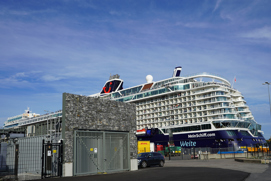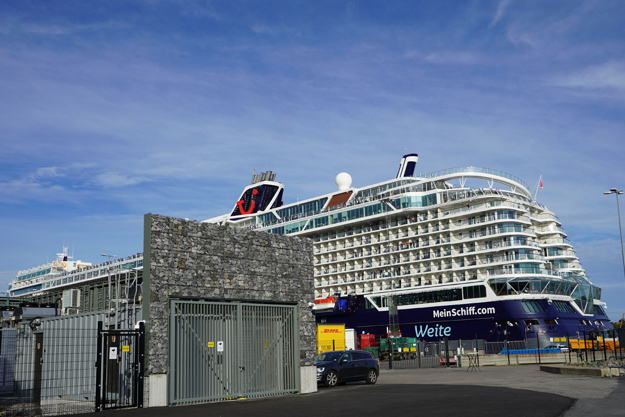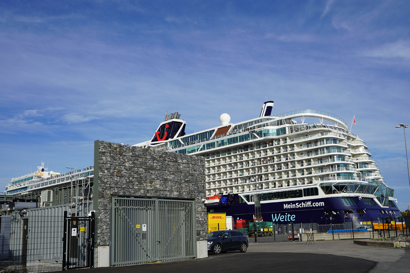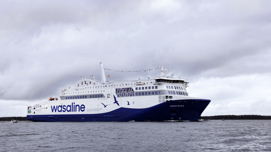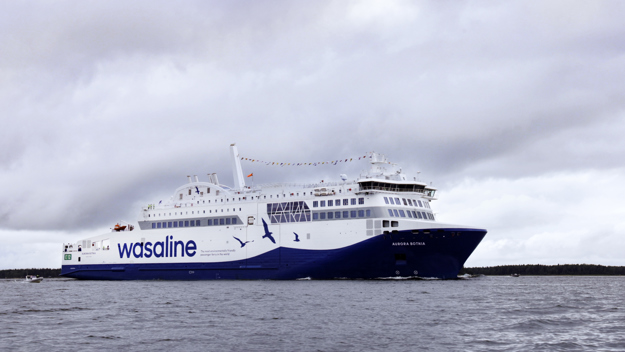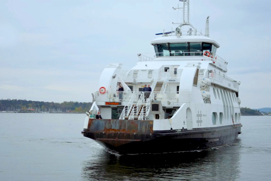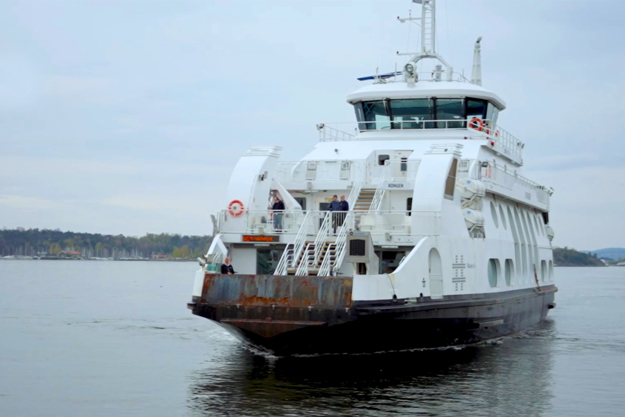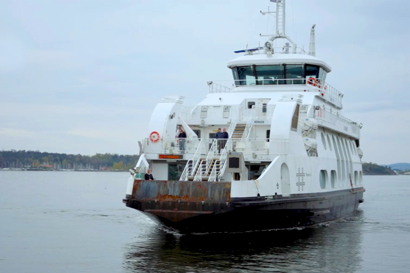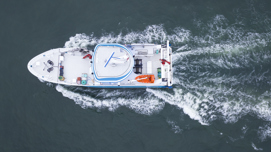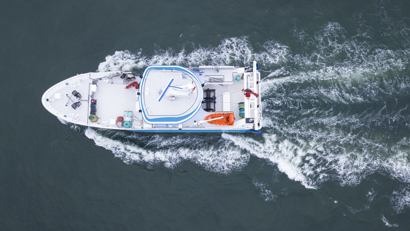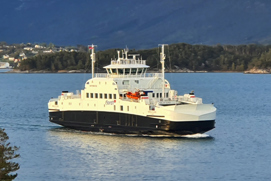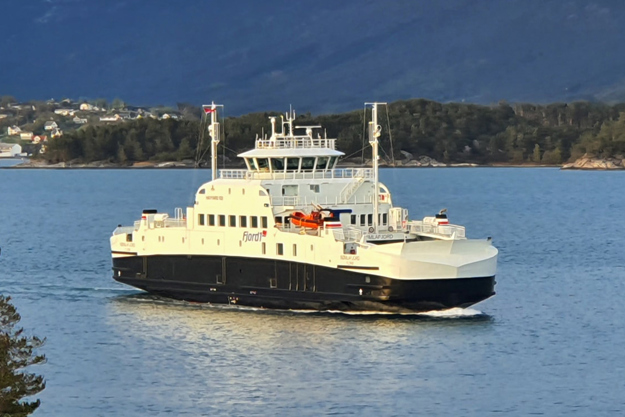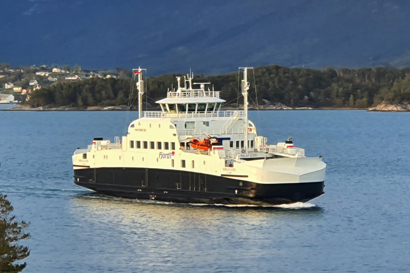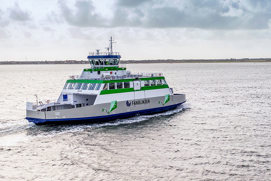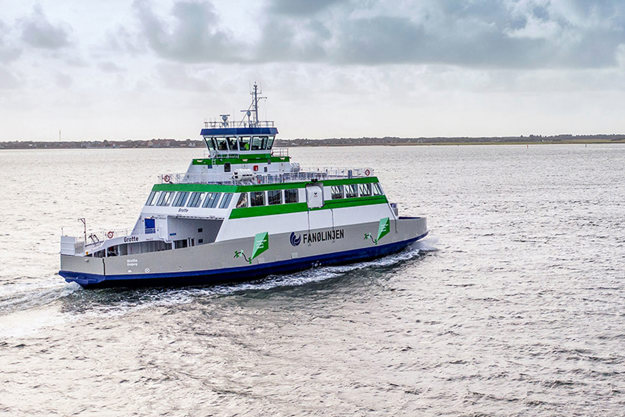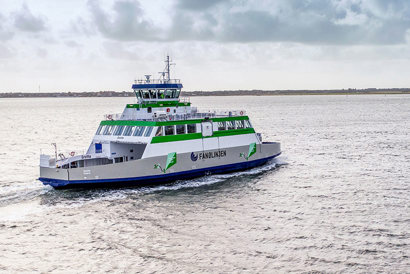Denmark’s shortest ferry route is now a pioneer of battery power.
Since 1958, Venoe Ferry has provided a lifeline to Venoe Island in northern Jutland. The current vessel has transported passengers at 30 minute intervals 36000 times annually since 2010. For six years it used diesel for electric power generation and propulsion, consuming 90,000 liters of fuel each year.
After a conversion to a hybrid power generation system, the auxiliary generators which previously ran for 19 hours daily now run for only 20 minutes every 24 hours. Emission levels are significantly lower for the battery-powered ferry crossing, and diesel consumption has been reduced by 20,000 liters annually.
The project began with a drive to cut costs and achieve more sustainable operation, by reducing fuel consumption for the auxiliary power generators. The process was a collaborative development project with Danfoss Drives, EPTechnologies, Super B, Hvide Sande Shipyard, and contractor Vest-El. The ferry was assessed, the battery supply and power conversion extensively tested, and finally the ferry equipped with a customized hybrid power generation system.
Venoe Ferry Operations Manager Søren Adsersen is understandably enthusiastic about the hybrid conversion:
“It’s a huge success for us. With cost neutrality within eight years, we’re totally satisfied.”
All power conversion installations
-
if (isSmallPicture) {


 PSW and Danfoss: Flexible onshore power for berthed cruise ships
PSW and Danfoss: Flexible onshore power for berthed cruise shipsNORWAY & SWEDEN: PSW (Power and Automation AS) paired up with Danfoss to create compact OPS solutions in three Nordic harbors: Stockholm, Ålesund and Haugesund/Karmsund.
-
if (isSmallPicture) {


 World’s first ferry powered by iC7-Marine: Aurora Botnia
World’s first ferry powered by iC7-Marine: Aurora BotniaFINLAND: The Aurora Botnia cargo and passenger ferry is equipped with a hybrid-electric propulsion system, powered by liquid-cooled iC7 drives from Danfoss.
-
if (isSmallPicture) {


 VACON® drives electrify passenger ferries in Oslo Fjord
VACON® drives electrify passenger ferries in Oslo FjordNORWAY: Electrification of the Nesodden ferries has reduced CO2 emission in the port of Oslo. VACON® drives and power converters play a key role onboard.
-
if (isSmallPicture) {


 Decarbonizing the next-generation training ship, Skulebas
Decarbonizing the next-generation training ship, SkulebasNORWAY: The new training vessel at Maløy Fishing School uses less diesel and emits less CO2, while also meeting the rigorous demands of the fishing industry.
-
if (isSmallPicture) {


 Where smart ferry charging begins with a smart grid
Where smart ferry charging begins with a smart gridNORWAY: The Hareid-Sulesund ferry operations have reduced CO2 emissions by 7000 tonnes annually with the introduction of electric vessels. In transitioning ferries from diesel to pure electric power, powerful onshore support is essential, in the form of reliable infrastructure for rapid charging capacity and stable grid supply. The systems on board and on shore act as a single system – a sophisticated and competitive system developed by Norwegian Electric Systems (NES) using Danfoss technology.
-
if (isSmallPicture) {


 Danfoss powers 100 percent electric ferry sailing World Heritage waters
Danfoss powers 100 percent electric ferry sailing World Heritage watersMolslinjen – Denmark's largest domestic ferry company – has set its first electric ferry in motion. The E-ferry Grotte will be breaking waves at the UNESCO World Heritage waters between the coastal town of Esbjerg and the island Fanø – and Danfoss is on board. The future holds great potential to operate shorter routes by electric ferries.

